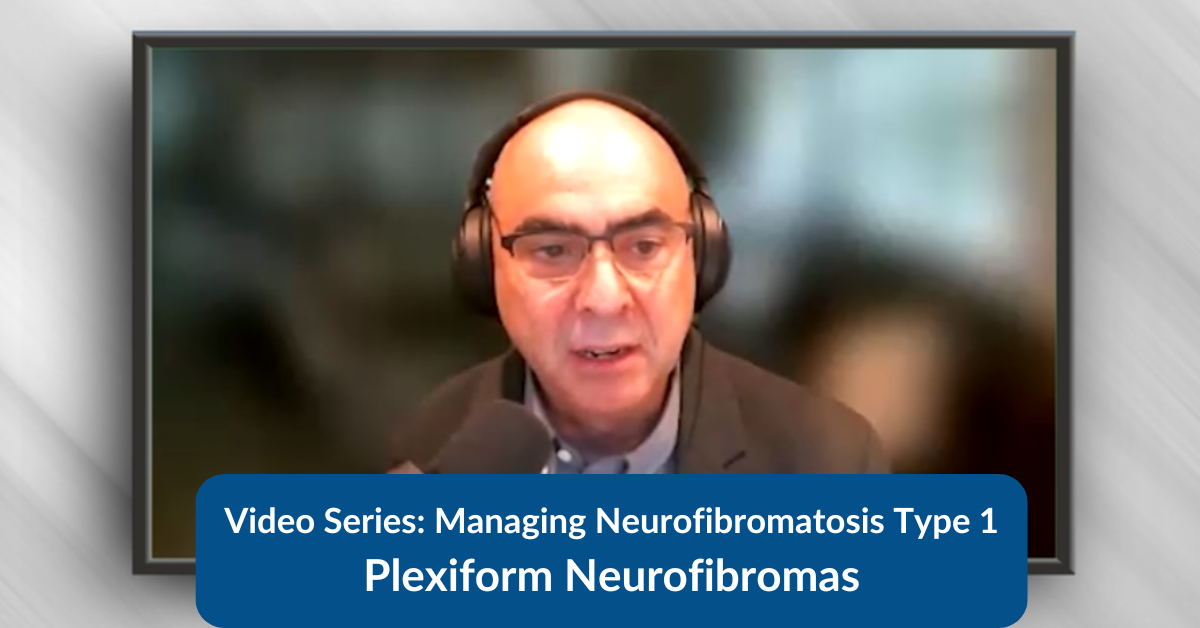Video Series: Managing NF1 Plexiform Tumors
NeurologyLive recently posted a video series Managing Neurofibromatosis Type 1 Related Plexiform Neurofibroma in Patients of Different Ages. The series consists of five short videos presented by Dr. Kaleb Yohay, a pediatric neurologist and director of the comprehensive NF center at NYU Langone Health.
NeurologyLive is a resource for busy healthcare professionals, and it may be helpful to share this video series with your physicians to give them a brief overview of caring for a patient with NF1 plexiform tumors. We thank Dr. Yohay and NeurologyLive for producing this helpful resource.

WHAT IS NF TYPE 1
Neurofibromatosis type 1, or NF1, is the most common form of NF. NF is a general term for several genetic conditions that cause tumors to grow on nerves. Currently, we group NF1, NF2-related schwannomatosis (NF2-SWN), and other schwannomatosis (SWN) under this term.
NF1 is the most common form of NF and occurs in approximately 1 in every 2,500 births. Many people inherit NF1 from a parent because an affected parent has a 50% chance of passing it on. People can be born with NF1 without inheriting it through what is called a genetic variant. They then may pass NF1. NF1 does not “skip” generations.
NF1 is often diagnosed in childhood. However, some people may be diagnosed later if they have mild symptoms. Also, some healthcare providers who are not familiar with NF1 may miss the early signs of the condition.
Characteristic features of NF1 may include café-au-lait spots (pigmented birthmarks), freckling in the armpits or groin area, bone abnormalities, learning disabilities, and neurofibromas. Cutaneous neurofibromas are benign tumors that often occur on or in the skin. A plexiform neurofibroma is a more extensive and complex growth that involves multiple nerves and can occur deeper in the body. Approximately 10% of plexiform neurofibromas may become malignant. Neurofibromas may cause disfigurement, pain, and other symptoms. People with NF1 may also develop other types of tumors including optic nerve gliomas which can lead to vision problems.
The severity of the condition can vary widely between individuals, even within families.
NF1 DIAGNOSTIC CRITERIA
The diagnostic criteria for neurofibromatosis type 1 (NF1) was updated in 2021, and is listed below. A physician may make a diagnosis of NF1 using these criteria or may require genetic testing. To make a diagnosis of NF1, an individual must have two or more of the following:
- Six or more café-au-lait spots (like flat brown birthmarks)*
- Freckling in the axilla (armpit) or groin*
- Two or more neurofibroma tumors of any type or one plexiform neurofibroma (a larger, more extensive tumor)
- Two or more Lisch nodules (benign colored spots in the eye) or two or more abnormalities in the choroid (vascular layer of the eye)
- Optic pathway glioma (a tumor of the optic pathway in the eye)
- Osseous lesion (bony lesion), such as sphenoid dysplasia (abnormal growth) of the bone behind the eye, or dysplasia or pseudarthrosis of the tibia (long bone in the leg) or other long bones
- A pathogenic NF1 variant (formerly called a gene mutation) revealed by genetic testing
- A parent with NF1 based on the criteria above
*At least one of the two pigmentary manifestations must be present on both sides of the body.





.png)





